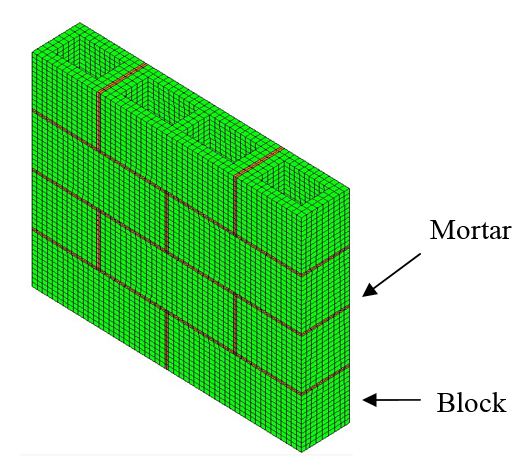A.A. Freitas1, M.A. Ramalho2 and M.R.S. Corrêa3
- Civil Engineer, PhD, University of São Paulo, alefrei@yahoo.com.br
- Associate Professor, Engineering School of São Carlos, University of São Paulo, ramalho@sc.usp.br 3 Associate Professor, Engineering School of São Carlos, University of São Paulo, mcorrea@sc.usp.br
ABSTRACT
This paper presents a comparison between experimental and numerical analysis of concrete block small walls (Wallets) under compression loads. The main goal of the study is to simulate the behavior of the walls based on the behavior of blocks and mortar joints using a numerical non-local damage model specially developed for quasi-brittle materials. First, blocks and mortar specimens are submitted to compression tests in order to evaluate damage parameters values. Then, Wallets built with the same blocks and mortar are also tested to evaluate their behavior. All tests are carried out with displacement control in order to obtain the complete loaddisplacement diagram for the specimens: the initial linear behavior, the failure load and the postpeak softening regime. After the experimental program, numerical models are developed for analyzing blocks, mortar specimens and Wallets. Eight-node brick finite elements with secant stiffness matrix are used and the load is applied by displacement control, achieving the complete load-displacement diagram. Obtained results show that the non-local damage model considered in this paper is able to predict not only the load and the displacement at the failure point but also the softening in the post-peak regime of the Wallets.
KEYWORDS: structural masonry, small walls, compression, damage model
B4-4



